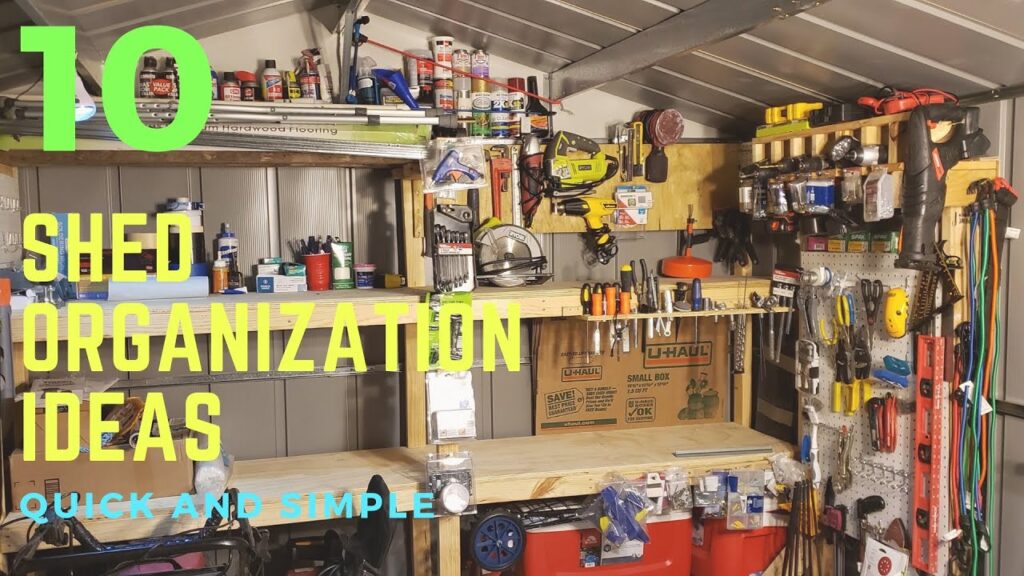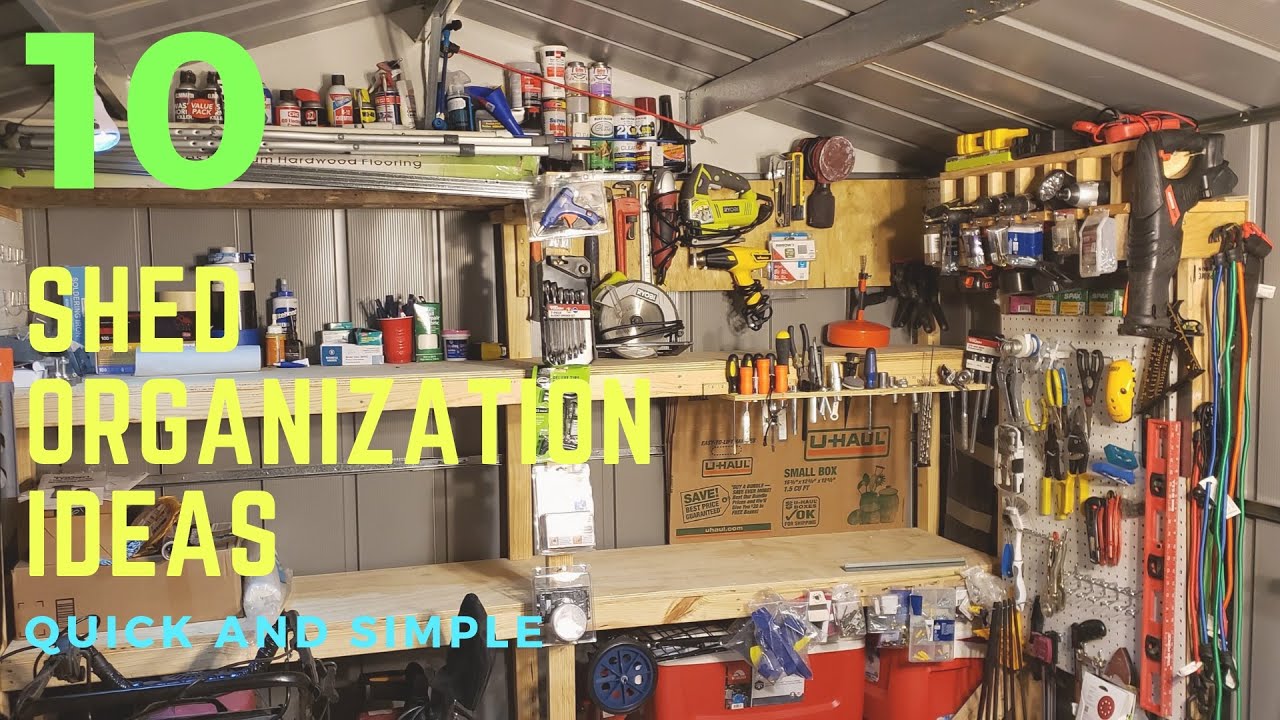
How to Organize Your Garden Shed: A Comprehensive Guide
A well-organized garden shed is more than just a storage space; it’s a functional extension of your home and garden. Clutter and disarray can make it difficult to find the tools and supplies you need, turning a simple gardening task into a frustrating chore. This guide provides a comprehensive approach to organize your garden shed, transforming it into an efficient and accessible workspace. We’ll cover everything from initial decluttering to implementing smart storage solutions, ensuring that your shed remains a valuable asset for years to come. Let’s dive into the best practices for organize your garden shed.
Why Organize Your Garden Shed?
Before we delve into the “how,” let’s address the “why.” A disorganized shed can lead to several problems:
- Wasted Time: Searching through piles of tools and equipment wastes valuable time that could be spent gardening.
- Damaged Equipment: Tools left exposed to the elements or haphazardly stacked can become damaged and unusable.
- Safety Hazards: Clutter can create tripping hazards and make it difficult to access essential items quickly.
- Pest Infestation: Piles of debris can attract pests like rodents and insects, which can damage your tools and supplies.
- Reduced Efficiency: A disorganized space hinders your ability to work efficiently, making gardening tasks more challenging.
By taking the time to organize your garden shed, you can avoid these issues and create a space that is both functional and enjoyable to use. A well-organized shed allows you to quickly find what you need, protect your tools and equipment, and create a safer and more efficient workspace.
Step-by-Step Guide to Organizing Your Garden Shed
Step 1: The Great Declutter
The first step in organize your garden shed is to completely empty it. This allows you to assess what you have and identify items that are no longer needed. Be ruthless in your decluttering efforts. Ask yourself these questions about each item:
- Have I used this in the past year?
- Is it still in good working condition?
- Do I have a duplicate of this item?
- Could someone else benefit from this item?
Create three piles: Keep, Donate/Sell, and Trash. Be honest with yourself about what you truly need. Items that are broken, rusty, or no longer used should be discarded. Usable items can be donated to local charities or sold at a garage sale. Properly dispose of any hazardous materials like old paint or pesticides according to local regulations.
Step 2: Clean and Repair
Once the shed is empty, give it a thorough cleaning. Sweep the floor, wipe down the walls, and remove any cobwebs or debris. Check for any signs of damage, such as leaks or rot. Repair any issues before you start organizing, as these problems can worsen over time and damage your tools and supplies. Consider applying a fresh coat of paint or sealant to protect the shed from the elements. A clean and well-maintained shed provides a better environment for storing your gardening equipment and helps prevent pest infestations.
Step 3: Plan Your Layout
Before you start putting things back, take some time to plan your layout. Consider how you use your shed and what items you need to access most frequently. Group similar items together, such as gardening tools, lawn care equipment, and potting supplies. Think about the vertical space in your shed and how you can maximize it with shelving and hanging organizers. A well-planned layout will make it easier to find what you need and keep your shed organized in the long run.
Step 4: Implement Smart Storage Solutions
This is where the real organize your garden shed magic happens. Here are some effective storage solutions to consider:
- Shelving: Install sturdy shelving units to store pots, fertilizers, and other gardening supplies. Adjustable shelves are ideal as they can be customized to fit your needs.
- Pegboards: Pegboards are perfect for hanging small tools, such as trowels, pruners, and screwdrivers. They keep your tools within easy reach and prevent them from getting lost in drawers.
- Wall-Mounted Racks: Use wall-mounted racks to store long-handled tools like rakes, shovels, and hoes. This keeps them off the floor and prevents them from becoming tangled.
- Clear Bins: Store small items like seeds, gloves, and labels in clear bins. Label the bins so you can easily identify the contents.
- Overhead Storage: If your shed has high ceilings, consider installing overhead storage racks for items you don’t use frequently, such as seasonal decorations or extra potting soil.
- Tool Organizers: Invest in specialized tool organizers to keep your hand tools and power tools neatly arranged.
- Potting Bench: A potting bench provides a dedicated workspace for potting plants and seedlings. Choose a bench with built-in storage to keep your potting supplies organized.
Choosing the right storage solutions will depend on the size and layout of your shed, as well as your individual needs and preferences. Consider the types of items you need to store and the amount of space you have available when selecting your storage solutions.
Step 5: The Art of Vertical Storage
One of the key principles of organize your garden shed is to utilize vertical space. Walls are often underutilized, but they offer a wealth of storage potential. Pegboards, shelving units, and wall-mounted racks can transform your shed from a cluttered mess into an organized haven. By maximizing vertical space, you can keep your floor clear and create more room to move around.
Step 6: Label Everything
Labeling is crucial for maintaining an organized shed. Label all your bins, shelves, and drawers so you can easily find what you need. Use a label maker or permanent marker to create clear and legible labels. Consider using color-coded labels to further categorize your items. Clear labeling will save you time and frustration in the long run.
Step 7: Implement a Maintenance Routine
Organize your garden shed is not a one-time task; it requires ongoing maintenance. Make it a habit to tidy up your shed after each use. Put tools back in their designated places, sweep the floor, and wipe down any spills. Regularly declutter your shed to remove items you no longer need. A little maintenance goes a long way in keeping your shed organized and functional.
Tips for Maintaining an Organized Garden Shed
- Put Things Back Immediately: The easiest way to keep your shed organized is to put tools and supplies back in their designated places immediately after use. This prevents clutter from accumulating and makes it easier to find what you need next time.
- Regularly Declutter: Periodically review the contents of your shed and remove any items you no longer need. This will prevent clutter from building up and keep your shed organized.
- Sweep Regularly: Sweep the floor of your shed regularly to remove dirt, leaves, and other debris. This will help prevent pest infestations and keep your shed clean and tidy.
- Inspect for Damage: Regularly inspect your shed for signs of damage, such as leaks or rot. Repair any issues promptly to prevent them from worsening and damaging your tools and supplies.
- Re-evaluate Your System: As your gardening needs change, re-evaluate your organization system and make adjustments as needed. This will ensure that your shed remains functional and organized for years to come.
The Benefits of an Organized Garden Shed
Investing time and effort to organize your garden shed offers numerous benefits:
- Increased Efficiency: A well-organized shed allows you to quickly find the tools and supplies you need, saving you time and effort.
- Improved Safety: An organized shed reduces tripping hazards and makes it easier to access essential items quickly in case of an emergency.
- Extended Tool Life: Properly stored tools are less likely to be damaged or corroded, extending their lifespan and saving you money.
- Reduced Stress: A clean and organized workspace promotes a sense of calm and reduces stress, making gardening more enjoyable.
- Enhanced Aesthetics: An organized shed enhances the overall appearance of your garden and adds value to your property.
By following these tips and implementing smart storage solutions, you can transform your garden shed into a functional and organized space that enhances your gardening experience. Take the time to organize your garden shed, and you’ll reap the rewards for years to come. Consider [See also: Garden Tool Maintenance Tips] for keeping your tools in top condition.
Choosing the Right Garden Shed
If you’re starting from scratch, selecting the right garden shed is crucial. Consider the size, material, and location. A larger shed provides more storage space, while a durable material like wood or metal ensures longevity. Proper placement can prevent water damage and ensure easy access. Think about [See also: Building a Garden Shed: A Step-by-Step Guide] if you’re considering building your own.
Maintaining Your Organized Space
Once you’ve successfully organize your garden shed, the key is maintaining that order. Regular decluttering, putting tools back in their place, and sweeping the floor are essential habits. Consider setting a reminder to do a quick tidy-up every week. It’s also important to adapt your storage solutions as your needs evolve. You might find that you need additional shelving or a different type of tool organizer as your gardening activities change.
Common Mistakes to Avoid
When you organize your garden shed, avoid common mistakes like overfilling shelves, neglecting vertical space, and failing to label items. Overfilling shelves can lead to items falling and creating a mess. Not utilizing vertical space wastes valuable storage potential. And failing to label items makes it difficult to find what you need. By avoiding these mistakes, you can create a more efficient and organized space.
In conclusion, organize your garden shed is a worthwhile investment that can save you time, money, and frustration. By following these steps and implementing smart storage solutions, you can create a functional and enjoyable workspace that enhances your gardening experience. Remember to declutter regularly, utilize vertical space, and label everything for optimal organization. With a little effort, you can transform your garden shed into a valuable asset that supports your gardening endeavors. Don’t forget to check [See also: Best Gardening Tools for Beginners] to ensure you have the right equipment for your organized space.

